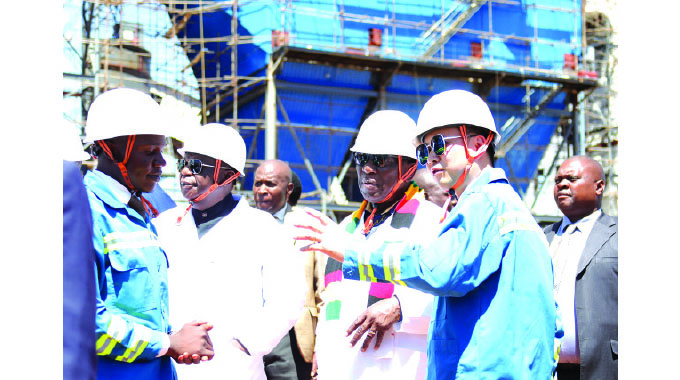Construction industry should adopt BIM processes

Tendai Nheta Correspondent
Digital technology is rapidly transforming industries across all sectors; however, not all industries acknowledge the importance of technology adoption. The construction sector is by nature a slow adopter of new work practices and innovations which directly affect performance. The emergence of Building Information Modelling (BIM) has the potential of contributing to reducing the associated challenges.
Several architecture, engineering and construction companies in Africa need to begin embracing new technologies. The idea behind adopting BIM for Africa will allow for progression from the traditional approaches that were adopted decades ago and try to utilise processes that proven to be more effective at saving cost, reducing waste and improving quality of infrastructure across the continent.
The inconsistencies in the construction sector across Africa are shocking, information distribution is unstructured, health and safety are next to non-existent, communication is a mess and collaboration is virtually impossible due to many reasons, mainly because of network connectivity and lack of education on the importance of digital technology and processes.
The call for change behaviour on how Africa perceives and uses technology could not be emphasised enough. aAcomplete shift from traditional to more digitally informed approach within the AEC sector which could allow local and regional construction companies to grow is vital. With the right education and support from key Government and private institutions responsible for infrastructure development, the potential is enormous and could result in improving our visibility as a focused industry that embraces change and our expertise could also be outsourced by those beyond our borders.
Getting rid of some incumbent models of working is the starting point, construction expertise should not be the work for expats outsourced from China, Germany or elsewhere unless the work is specialised and outside local companies’ scope.
The construction sector needs to reform, sporadic development cropping up at every corner of the capital cities and towns could only grow and limit the expansion of the CBD as they should. Although some of these issues may sound trivial, they make a difference in controlling unscrupulous activities from taking place and protecting the environment from unnecessary disturbances.
Master plans for town and cities need to be availed to the general public to inform and educate people about upcoming developments or simply to make people aware of the type of developments are allocated for certain portions of land to avoid the building of unauthorised structures. Restrictive measured should be put in place to prompt a change of mindset, allowing existing bylaws to be revised to suit a shift in technology in this Fourth Industrial Revolution.
Jumping on the bandwagon is not good enough, Africa needs to lead the pack, construction firms should be using data to make better decisions, thus increasing productivity, improve site safety and ultimately reduce risks.
The drive for digital construction should begin to take shape in our sectors as it has already begun on the European continent and other developed and developing countries, with the rise of artificial intelligence (AI) and machine learning systems, the entire AEC sector should make use of data collected over the years to alter issues that have marred the industry, creating inefficiencies and rendering the sector unproductive and less competitive. Data collation and interpretation can be beneficial to predict future outcomes on projects, coupled with AI, the sector can improve worker productivity, saving project costs and improving quality of construction.
Implementing new ways of working within the construction sector particularly in Zimbabwe is long overdue, the industry is underperforming, buildings are completed to poor standards and over budget. The perception that construction does not improve the economy is false. Taking the UK, for example, where construction is sort after, in 2017, according to the UK Construction industry: statistics and policy report, the UK construction sector contributed £113 billion to its economy, 6 percent of total economic output. There were 2,4 million jobs in the sector, 7 percent of the UK total.
There were 1,0 million construction businesses in the UK, 17 percent of the total. These statistics should define a pathway for Africa, having knowledge and understanding of what works, and implement the processes and technology to realise results. Research has shown that embedding BIM processes across all stages of construction projects are key to achieving project success, several construction companies in Europe and America have been progressing well in the area of utilising digital technology on every aspect of construction.
Supported by the government, the United Kingdom is one of the leading early adopters of BIM, after the realising that the construction sector was in shambles, the government commissioned researchers to study the construction sector and present findings and recommendations to the government. The reports identified many issues that needed addressing, one of the solutions to projects going over budget, accumulating waste, inconsistent information and lack of collaboration gave birth to BIM which is now being used to across the construction sector. Results show that utilisation of BIM saves project construction cost, reduced or eradicate rework, informed decision in terms of feasibility of the project since cost simulation is run during the design stage and improves.
Time for Africa to embrace technology within the construction industry, others may argue that this is not conducive for Arica, one wonders why Africa should be on the tail of technology adoption, the drive should be across industries and not only to the Architectural Engineering and Construction sector (AEC).
Other countries have begun to make use of robots and artificial intelligence (AI) to monitor construction progress with real-time, actionable data to improve construction site productivity. Autonomous drones and rovers are equipped with high-definition cameras to snap photographs and scan the construction site each day with pinpoint accuracy that could be used to create time-lapse videos showing project progress reporting. Data collected would enhance the quality of the worksite, construction processes and health and safety improvements. AI then uses those scans to compare against your BIM models, 3D drawings, construction schedule, and estimates to inspect the quality of the work performed and to determine how much progress has been made each day.
Currently, as Zimbabwe is going through some economic challenges, it is time for industries to re-evaluate their processes and incorporate digital technology, automation and mechanisation to improve efficiency. The implementation process could be cost-intensive but could achieve great results and in the long-term improving efficiency. Some recommendations for the Zimbabwe construction sector would be to utilise as much technology as possible, inasmuch as it is critical to do so, the starting point is for the industry to adopt BIM processes.
The need for continuous growth within the construction sector is crucial for the development of the country, the industry needs to develop interoperability with its relevant stakeholders to achieve the collaborative benefits of BIM, effective communication and use of the common data environment allow for a seamless data management across the whole project lifecycle. Changing work practices requires the preparation and conditioning of the mind. Change in itself possesses challenges, both known and unknown, highlighting these issues is requisite for any industry to adapt to working outside of the norm. Industries need to tackle these challenges through the utilisation of the Fourth Industrial Revolution solutions.






Comments